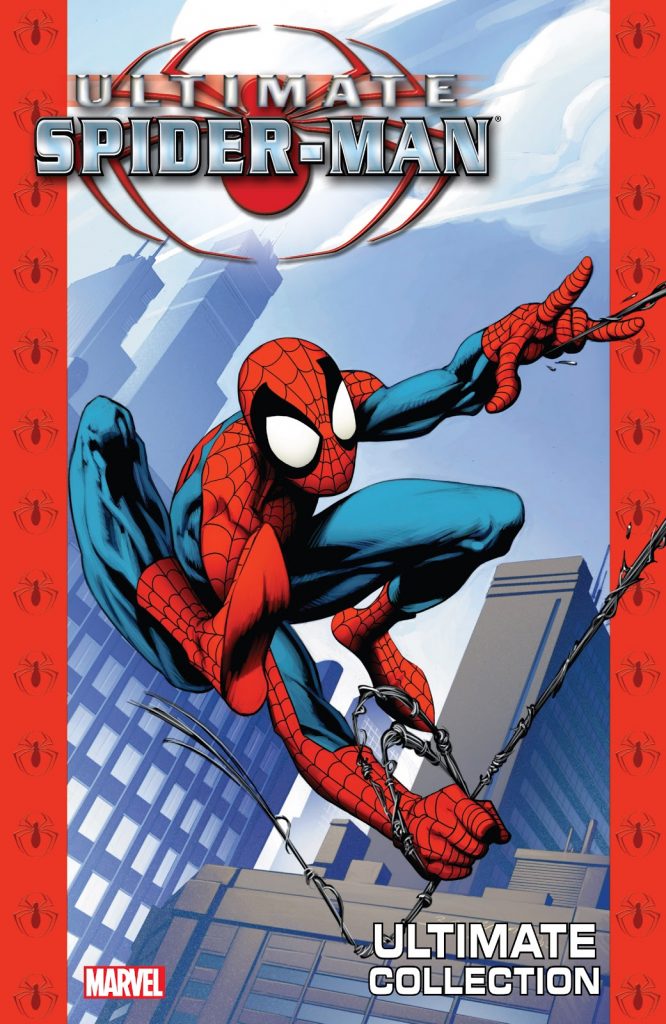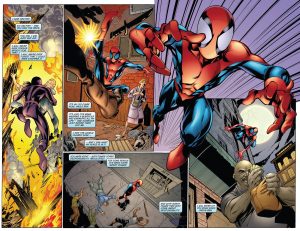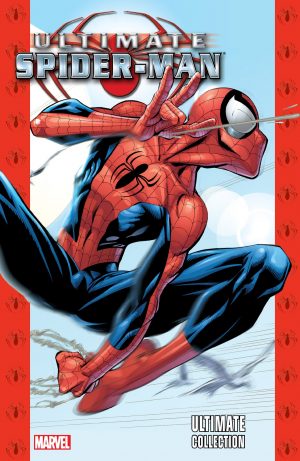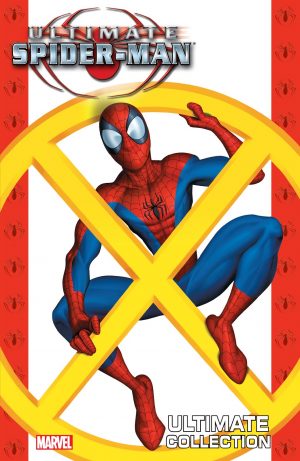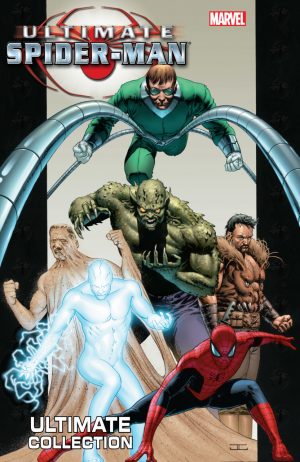Review by Frank Plowright
Marvel had presented assorted variations of Spider-Man before, most short-lived, but in the 1990s Spider-Man 2099 had a decent run. What they’d never attempted was to re-boot the feature from the beginning as a new series. It was probably time, as although the plan wasn’t greeted with enthusiasm by fans, those old Spider-Man stories by Stan Lee and Steve Ditko were beginning to look very dated. That applied more to the civilian drama of Peter Parker at high school and the Daily Bugle backdrop than the still stirring Spider-Man action, but those more ordinary scenes were an important component of Spider-Man’s appeal. From a marketing viewpoint, the plan was a no-brainer.
What was introduced in 2000 was a new version of Peter Parker as Spider-Man on a different Earth, whose adventures would run concurrently with the regular version, still spread over several titles. It united a relatively new writer with a great talent for pithy dialogue with a workhorse artist whose reputation was for reliability. Once fans saw what Brian Michael Bendis and Mark Bagley produced, the moaning stopped almost immediately. Then Marvel executive Bill Jemas also contributed to a plot in which the creators extended the essentials of Lee and Ditko’s Spider-Man’s origin story over five chapters, able to revise some matters that gave greater grounding to Peter Parker’s cast. Why wait until his college days to introduce Mary Jane Watson and Harry Osborn? Wouldn’t it make more sense if the Green Goblin were Spider-Man’s first villain instead of the Chameleon? And if the Terrible Tinkerer and a meeting with Doctor Doom didn’t happen? After those first five chapters Bendis goes it alone, and apart from the broad parameters ignores past glories, while using reader anticipation of them to introduce interesting variations. Spider-Man’s moral indignation at the Kingpin’s stature and respect is an example.
Bagley isn’t best matched with inker Art Thibert, but his storytelling clarity shines through, he’s dynamic with the action sequences and there’s the opportunity to completely redesign some classic villains. Bagley leaves the Kingpin well enough alone, but his new Green Goblin is a monstrous creation, barely contained by the panels, and Electro now wears a dark insulated suit rather than a bright yellow and green creation. Those important civilian scenes sparkle, with Bendis providing the authentic voice of the 1990s teenager. Terminology, technology and fashions have inevitably dated slightly, but not enough to be anything more than a minor quibble.
It’s surprising that a 2000 reboot makes so little effort to present an integrated society, but creatively and financially Ultimate Spider-Man was a phenomenal success that rapidly led to regeneration of the core Spider-Man titles. It was good enough to pick up an Eagle Award for Best New Title, and remains a very enjoyable read, with Bendis a natural in supplying Spider-Man’s quipping dialogue. Anyone preferring to feel their way into a fantastic run can still sample the slimmer paperbacks. They’re still readily available as Power and Responsibility and Learning Curve, whilst exactly this combination is supplied in hardcover as Ultimate Spider-Man Vol. 1 or thick paperback format as Ultimate Spider-Man Ultimate Collection Vol. 1. There’s also an Ultimate Spider-Man Omnibus.
